How To Frost Glass: 4 DIY Methods for Superb Results
Author: Jen Worst | Editor: Omar Alonso
Review & Research: Jen Worst & Chris Miller

You’ve found the perfect place, but the windows don’t offer any privacy and seem bland. Instead of passing on your new home, try frosting the glass. Frosted glass can add privacy and flair to your windows. But knowing how to frost glass is a small challenge that you can overcome.
Buying frosted glass windows and paying someone to install them is much more expensive than doing it yourself. By doing it yourself, you save time and money and can choose a permanent fix or temporary one in case you’d like to try something different in the future. Here is everything you need to know about DIY glass frosting.
4 Different Ways to Frost Glass
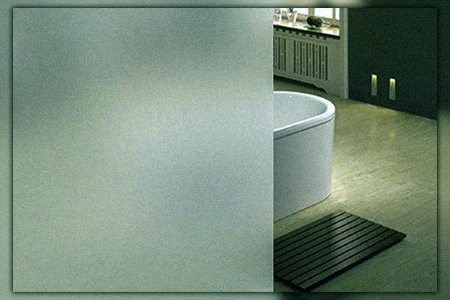
There are several different ways to frost glass. Four options are an etching cream, spray paint, cornstarch and tissue paper, or a window film. The etching cream and spray paint are more permanent options, while the cornstarch/tissue paper and window film are temporary.
The temporary options are ideal if you’re in an apartment or temporary home and need to remove the frost before moving. They make a nice addition to any window treatments, as well. Regardless, DIY frosted glass comes out looking as good as the kind you buy when done with care. And that starts with preparation.
Prepping to Frost Glass
First, decide which method you want to do, and collect all your materials. Clean the glass you’ll be frosting, preferably with a glass cleaner, to ensure there’s no dirt or debris on the glass.
If the glass isn’t clean, the frosting method you chose may not turn out properly, and the finished product may not stick correctly or be uneven. After cleaning, dry the glass with a lint-free cloth and tape off the space you’ll be working on.
Depending on your chosen method for how to frost windows, ensure you have proper ventilation and appropriate protection for your eyes and skin. Follow the package instructions to know what you need before you start the window frosting process.
1) Using Etching Cream to Frost Glass
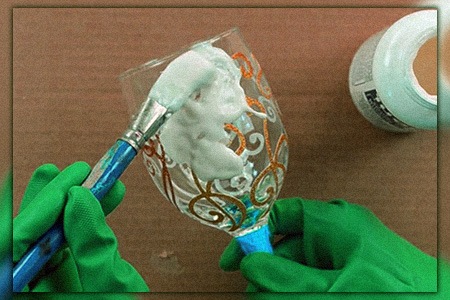
A permanent and irreversible way to frost glass is by using etching cream—the chemicals in the cream cause micro-scratches in the glass, giving it a frosted look. Using etching cream isn’t the best option if you want to look out the window one day or live in a rental.
However, if this is your option, then ensure you have everything you need to complete the process. In addition to etching cream, you’ll need protective eyewear, protective gloves, and tape to mark off the area you’re working.
First, clean the glass with your glass cleaner and tape off the area. Make sure the etching cream is at room temperature. With a rough bristled brush, scrub the etching cream onto every area of the glass you want frosted. Apply the cream thickly to prevent brush strokes.
Then wait for the specific time listed on the container or in the instructions, typically five to ten minutes. Once your time is up, using warm water, rinse the cream from the glass.
2) Using Spray Paint to Frost Glass
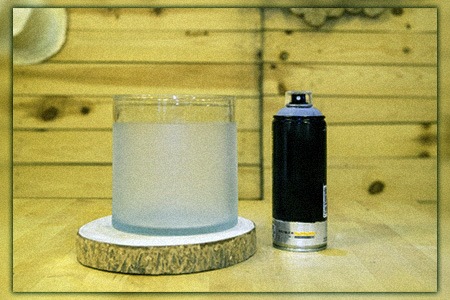
The spray painting method for how to frost glass is not as permanent as the etching cream. However, it’s difficult to remove spray paint if you change your mind. Although, it can be removed with a lot of patience, a paint remover, and a razor blade.
Once you’ve obtained the frosting spray paint, clean the glass with your glass cleaner and tape off your area. This is an excellent option if you’re using a stenciled design. Depending on how much glass you plan to frost, you may need multiple cans.
Remember to cover the floors and walls to protect them, so you don’t get paint on them. Wear a face mask to prevent inhaling paint fumes. And it’s good practice to wear clothes you are okay with getting messy whenever you’re painting.
After you’ve frosted the glass to your liking and let it dry, you can enjoy it. Start by spraying a small amount in even passes to cover the glass and let it dry for a few hours, following the instructions on the can before adding a second layer.
Try not to use the area until it’s dry. Once it's dry, you can enjoy it or add another layer of paint if it still seems see-through. And that's our second method for how to make glass frosted.
3) Using Cornstarch & Tissue Paper to Frost Glass
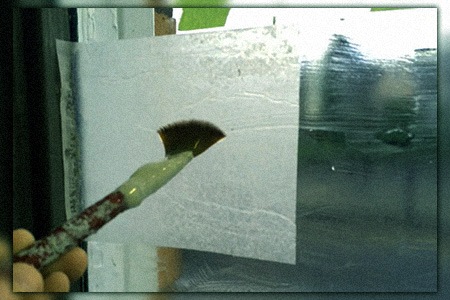
The cornstarch and tissue paper method can be used to frost glass, but it is messy to apply and remove. Be aware of the location of the glass. Direct sunlight and overheating can lead to the frosting breaking down more quickly compared to a cooler location.
When preparing to frost glass with cornstarch and tissue paper, remember to tape off the area you’re working in and cover the floor and walls to protect them from getting messy.
The next step with this method is collecting cornstarch and tissue paper. Although, you can use fabric lace instead of tissue paper to customize your design and add to your decor.
After collecting your supplies, mix one tablespoon of cornstarch with one tablespoon of cold water and mix into three-quarters cup of boiling water. Once this cools and drys, you’ll have an adhesive paste.
While the adhesive paste is cooling, clean the glass with a glass cleaner and dry it with a lint-free cloth. With a paintbrush, take the adhesive paste and paint it onto every area of the cleaned glass you want frosted.
Then carefully - to prevent bubbles, wrinkles and tears - stick the tissue paper onto the adhesive paste. After the tissue paper is placed in your desired pattern or location, brush the adhesive paste on top of it to finalize it and secure it in place.
4) Using Window Film to Frost Glass
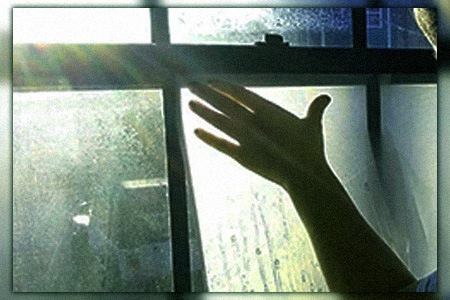
The window film method for how to frost glass is temporary and works by static cling. It is also called glass adhesive if you’re searching online or in stores. Some manufacturers sell window films with patterns and textures that can add to your decor if you’re interested in sprucing up the area.
Although using window film is less expensive than buying and installing pre-frosted windows, the cost will add up if you’re planning to frost several or large pieces of glass. This kind of DIY frosted window is much easier to get consistent results with, though.
You may need to buy more than needed and cut the film to fit. Considering the amount of glass to frost and the price of how many films you need, you may want to try one of the other methods. And like the cornstarch and tissue paper method, direct sunlight can cause the film to break down faster compared to a cooler area.
After you’ve bought your film and cut it to fit, clean your glass with a glass cleaner and dry it with a lint-free cloth. You’ll also need dish detergent, water, and a spray bottle. Mix the water and dish detergent in the spray bottle and spray on the glass where you’ll be applying the film for it to stick better.
Now take your time and go slow. Use a squeegee or similar tool to remove any air bubbles as you apply the film. Like a cellphone screen, it can be easy to remove if needed; however, it won’t stick as well if taken off and repositioned.
The Pros & Cons of Frosting Your Own Glass
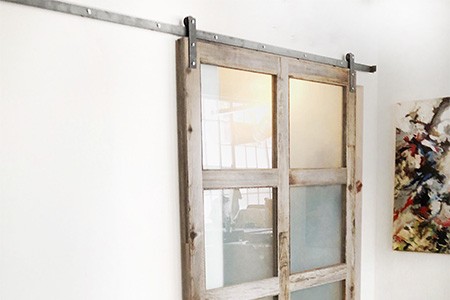
Frosted glass carries many benefits. Firstly, frosting glass on your own will save you money. It’s less expensive than buying and paying for the installation of pre-frosted glass. It gives you privacy allowing you to be more comfortable in your home. Doing it yourself will enable you to be unique and creative and tailor the project to your needs.
However, if creativity isn’t your strong point and you need help with DIY projects, then frosting glass on your own may be a hindrance. There are so many methods to choose from that it could become overwhelming when deciding how to frost and design the glass.
Although with the money you save, you could try one of these methods, and if you like it, then enjoy it. If you don’t, then hire a professional. Either way, you'll enjoy increased privacy from blocked views, diffused light, and an improved decor aesthetic.
That’s How to Make Frosted Glass DIY Style
If you want to frost glass DIY style, then know that some techniques are temporary, such as the cornstarch and tissue paper method and the window film method. In contrast, other plans are more permanent, like the etching cream and the spray paint methods.
Whichever you decide, you’ll end up with frosted glass DIY style, which in the end, can add more privacy and decor to your windows or room. Now that you know how to frost glass choose the best method for your project.



